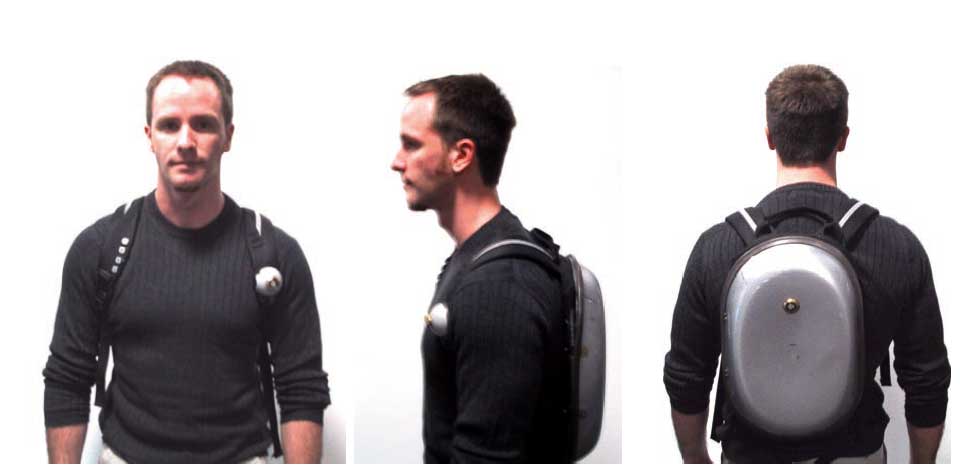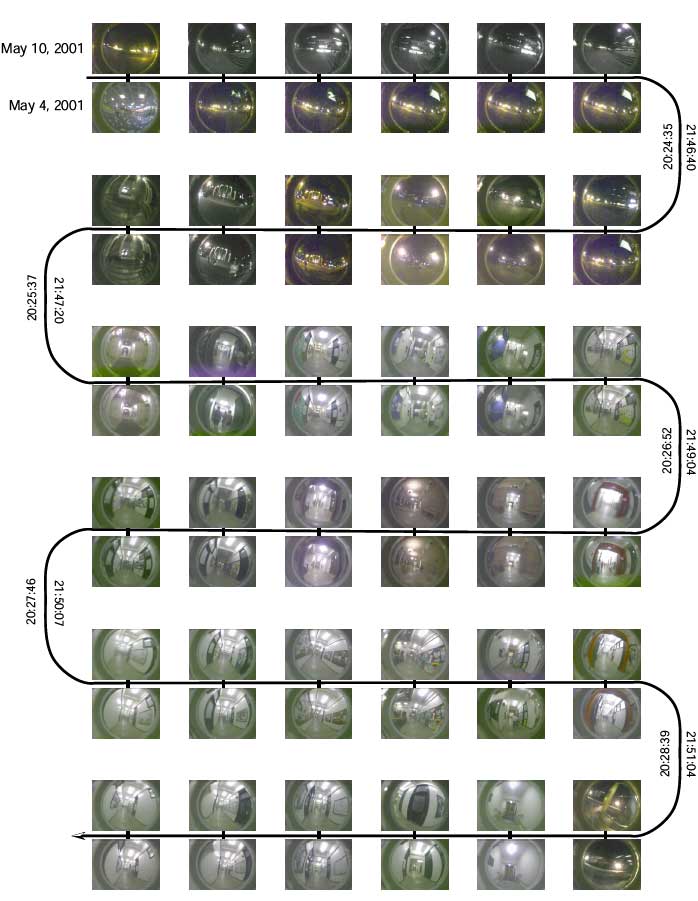
lindsay williams’ sensecam is a wearable digital camera with a wide-angle lens that captures time-lapse movies of the wearer’s activities. her team has done a study suggesting that the camera can be useful to help someone with dementia remember events. a woman who watched the recording could then remember events for several months, as opposed to a written diary after which memories only lasted days. this is a clip she made of what the camera might capture on a typical day, her commute to work:
MIT medialab student brian clarkson’s 2002 thesis ‘life patterns‘ (pdf) describes a system that he wore for several weeks. it was far bulkier than the sensecam because it captured full video of the front and back of the wearer on a computer hard disk:

the problem with any such logging system is how to deal with the incredible amount of information and make it useful. clarkson’s thesis proposed image understanding software that could identify activities and places. and williams uses time-lapse to compress data. but a much more significant problem is motivation: why would you want to record everything that happens to you? what if your life is not interesting? and if it is interesting, it is better to invest some effort in capturing it consciously – not through a tiny wide-angle camera. one conclusion of clarkson’s system is that activites that are repeated can be removed from the log: as in this monotonous walk into the same building on two different days:

probably the most reliable way to make a life-logging system work would be to eliminate all of the repetitive activities and distill out only the new faces and places that one encounters.